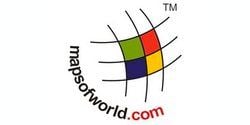Overview:
Tamil is a Dravidian language, meaning that it belongs to a family of languages found mostly in southern India, which at one time might have been dominant all across the Indian subcontinent. It is related to a few other major Indian languages such as Kannada and Telugu, as well as Malayalam, which actually used to be a dialect of Tamil but branched off into a separate language many centuries ago. Tamil was named the first of the now four Classical Languages of India (the other three being Sanskrit, Kannada, and Telugu). It is mostly spoken in the regions of Tamil Nadu, Puducherry, and Sri Lanka.
Roots of the language:
The ancient culture that first spoke Tamil lived thousands of years ago in the Godavari river basin in southern India, and they have been associated with many of the region’s Neolithic ruin complexes. Tamil descends from Proto-Dravidian, along with all the other languages in the Dravidian family. It has been influenced by Sanskrit, but to a much lesser extent than many other Indian languages, in some cases actively resisting the incorporation of more Sanskrit words. Although in the present day there is opposition among those who wish to keep Tamil true to its roots, many loanwords from foreign languages have made their way into Tamil.
Language characteristics:
For such an old language, Tamil has had a remarkably consistent grammatical progression. Most varieties of Tamil are highly mutually intelligible, although there are high and low registers based on the social status of the speaker. Differences in vocabulary from region to region are relatively mild and tend not to affect overall comprehension. Tamil has three general styles: sankattamil, which is based on ancient Tamil; centamil, a modern form used in formal situations; and kotuntamil, the modern everyday form.
Tamil words are grammatically divided into classes that fall into one of two categories: “rational” (for humans, deities, and other intelligent beings) and “irrational” (for animals, objects, and abstract concepts). Nouns in Tamil are conjugated based on the class that they belong to. Suffixes serve to create most of the inflections of Tamil words, while prefixes are used as demonstratives (this, that, these, those, etc.).
Written form:
Tamil possesses one of the oldest literary canons of any living language in the world. In fact, it includes the oldest written works in India that are considered separate from the influence of the Sanskrit language. The first known script used to write in Tamil is the Tamil-Brahmi, which is more than three thousand years old and known primarily from ancient cave inscriptions and burial pottery. The next script, Vattelutu, was developed from this, but is not the direct ancestor of the modern Tamil alphabet. The Grantha script, which was sometimes used for Tamil, was simplified in the seventh century and became the Tamil script throughout the kingdoms of Chola and Pallava. The modern Tamil alphabet is mostly derived from the Chola-Pallava script, with some additions from Vattelutu and Grantha.
The literary history of Tamil is known for its early maturity. Texts dating back to the second century BC show sophisticated epic poetry and religious discussion. Many Tamil literary classics came to be in the medieval period, helping to popularize devotional writing in particular all across South Asia. After a somewhat quieter period, Tamil literature exploded again in the nineteenth and twentieth centuries, quickly adopting more modern genres such as the short story, novels and novellas, and even cinema.
 Native American Languages
Native American Languages